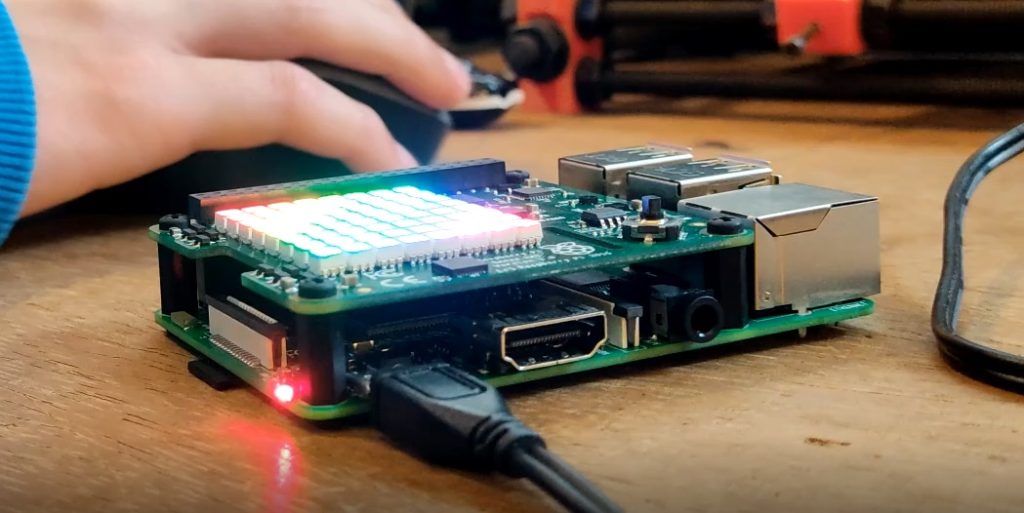From the Journal: American Journal of Physics
WASHINGTON, May 23, 2022 – A group of high school students used a tiny, inexpensive computer to try to measure Earth’s magnetic field from the International Space Station, showing a way to affordably explore and understand our planet.

In the American Journal of Physics, published on behalf of the American Association of Physics Teachers by AIP Publishing, three high school students from Portugal, along with their faculty mentor, report the results of their project. The students programmed an add-on board for the Raspberry Pi computer to take measurements of Earth’s magnetic field in orbit. This add-on component, known as the Sense Hat, contained a magnetometer, gyroscope, accelerometer, and sensors for temperature, pressure, and humidity.
The European Space Agency teamed up with the U.K.’s Raspberry Pi Foundation to hold a contest for high school students. The contest, known as the Astro Pi Challenge, required the students to program a Raspberry Pi computer with code to be run aboard the space station.
The students used the data acquired from the space station to map out Earth’s magnetic field and compared their results to data provided by the International Geomagnetic Reference Field (IGRF), which uses measurements from observatories and satellites to compute Earth’s magnetic field.
“I saw the Astro Pi challenge as an opportunity to broaden my knowledge and skill set, and it ended up introducing me to the complex but exciting reality of the practical world,” Lourenço Faria, co-author and one of the students involved in the project, said.
The IGRF data is updated every five years, so the students compared their measurements, taken in April 2021, with the latest IGRF data from 2020. They found their data differed from the IGRF results by a significant, but fixed, amount. This difference could be due to a static magnetic field inside the space station.
The students repeated their analysis using another 15 orbits worth of ISS data and found a slight improvement in results. The students thought it surprising the main features of Earth’s magnetic field could be reconstructed with only three hours’ worth of measurements from their low-cost magnetometer aboard the space station.
Although this project was carried out aboard the space station, it could easily be adapted to ground-based measurements using laboratory equipment or magnetometer apps for smartphones.
“Taking measurements around the globe and sharing data via the internet or social media would make for an interesting science project that could connect students in different countries,” said Nuno Barros e Sá, co-author and faculty mentor for the students.
###
For more information:
Larry Frum
media@aip.org
301-209-3090
Article Title
Modelling the Earth's magnetic field
Authors
Nuno Barros e Sá, Lourenço Faria, Bernardo Alves, and Miguel Cymbron
Author Affiliations
University of the Azores, Escola Secundária Domingos Rebelo
American Journal of Physics
ABOUT THE JOURNAL
American Journal of Physics is devoted to the instructional and cultural aspects of physics. The journal informs physics education globally with member subscriptions, institutional subscriptions, such as libraries and physics departments, and consortia agreements. It is geared to an advanced audience, primarily at the college level. Contents include novel approaches to laboratory and classroom instruction, insightful articles on topics in classical and modern physics, apparatus, and demonstration notes, historical or cultural topics, resource letters, research in physics education, and book reviews.
ABOUT AAPT
AAPT is an international organization for physics educators, physicists, and industrial scientists—with members worldwide. Dedicated to enhancing the understanding and appreciation of physics through teaching, AAPT provides awards, publications, and programs that encourage teaching practical application of physics principles, support continuing professional development, and reward excellence in physics education. AAPT was founded in 1930 and is headquartered in the American Center for Physics in College Park, Maryland.
